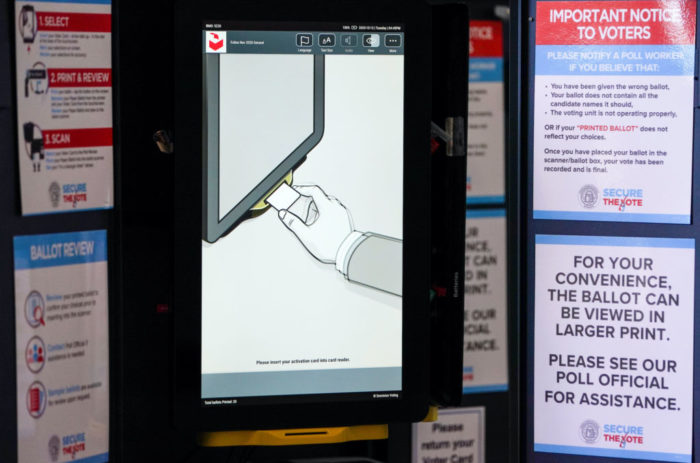redo Jump to...
print Print...
Directions
-Read the excerpt below (from the report posted at HonestReporting.com).
-Read "Types of Media Bias" in the right column. Then answer the questions.
From HonestReporting.com:
… we looked at 205 [New York Times] articles between July of 2007 and June of 2008. …when reviewing headlines and photographs, it is clear that there is an inherent bias in New York Times reporting about the conflict that favors the Palestinians.
THE NEW YORK TIMES: JULY 2007-JUNE 2008- SUMMARY OF FINDINGS:
- 82 percent of headlines that introduced articles describing Israeli military operations were written in a direct style in which the words “Israel” or “Israeli Forces” (or a similar phrase) were the subject. In the majority of these cases, no details were given as to whether the casualties were combatants or civilians. An example of this type of headline ran in the Times on January 4, 2008: “Israeli Forces Kill 9 in Gaza.”
- Only 20 percent of headlines that introduced articles describing Palestinian attacks named the group responsible. Most of these headlines were written in a passive, less direct style that removes responsibility of the attack from those who caused it. An example of this type of headline ran on May 13, 2008: “Rocket Fired from Gaza Kills Woman in Southern Israel.”
FINDINGS IN DEPTH
I. Headlines related to Israeli military operations:
Of the 205 articles we reviewed, 22 dealt primarily with Israeli military operations. In almost all of these, the Times used a consistent style. Israel or a related term (“Israeli Military”, “Israeli Forces”, etc.) was used as the subject. A strong verb (“kills”, “shoots”) was used and the object of the sentence was usually the number of casualties listed, often without any other details.
Below are a few examples:
- Israeli Forces Kill 6 in Gaza
- Israeli Forces Move Into Gaza
- Israeli Airstrike Kills Top Militant
- Israeli Forces Kill 9 in Gaza
- Israeli Air-Strike in Gaza Kills 2 Hamas Members
- Israeli Incursion in Gaza Kills 5
II. Headlines related to Palestinian Attacks:
On the other hand, the Times style for writing headlines concerning Palestinian attacks is markedly different. We found that in only about 20 percent of the cases were those responsible for the attack mentioned in the headline. Much more common was the use of the weapon as the subject of the attack (“Rocket”, Suicide Attack”).
Below are a few examples of this type of style:
- Rockets Hit Israel Whose Strikes Kill 5
- Suicide Attack in Israel Kills One
- Rocket Endangers Palestinian-Israeli Respite
- Rocket Fired from Gaza Kills Woman in Southern Israel
- Rocket Hits City in Israel as Bush Hails Anniversary
- Strikes Kill Israeli Worker and 4 Year Old Child
- Rocket Hits Israel Breaking Hamas Truce
Clearly, none of the Times headlines are untruthful. On a case by case basis, they accurately summarize the events in the accompanying articles. However, when reviewing the numerous headlines used by the Times, there is clearly a pattern that places more weight on Israeli actions than those of the Palestinians. Balanced reporting requires that a consistent style be used no matter who is the initiator of the event. Ascribing the attack to an inanimate object such as a rocket over and over again indicates bias.
…………………………………………….
CONCLUSIONS
The news is not all bad. In our last report, we noted that certain phrases (“illegally occupied territory”, “the former Palestine”) appeared in the Times. We did not find these same issues in our current analysis. Perhaps the new New York Times Jerusalem bureau chief Ethan Bronner is paying closer attention to these type of issues. If so, then we hope to see even better reporting in the month ahead.
Nonetheless, even a well-written, objective article can end up misunderstood if the headlines and images around it distract from the story rather than complement it. Unfortunately, the issues of headline style and image selection that we highlighted last year are still a serious problem. The Times should make sure that:
- All articles on the Mideast are balanced and objective and do not subjectively favor either side.
- Headlines are written in a consistent style that shows no favoritism.
- There is an even distribution of images that illustrate the most salient points of the accompanying articles.
HonestReporting subscribers can help push the New York Times to take these measures by writing to the Public Editor of the New York Times at public@nytimes.com.
Read the complete report on The New York Times at HonestReporting.com.
To accurately identify different types of bias, you should be aware of the issues of the day, and the liberal and conservative perspectives on each issue.
Types of Media Bias:Questions
The bias here is very subtle – the average reader would probably not think, by reading one headline alone, that it was biased. But comparing a number of headlines on the same subject shows that they are indeed biased against Israel in support of the Palestinians. The job of the news media is to report the news, not interpret it.
1. What type of bias is the report on New York Times headlines an example of?
2. Why do you think The Times is biased against Israel in its news reports on the Israeli-Palestinian conflict.
3. Challenge: Send an email to The Times’ public editor at public@nytimes.com expressing your opinion on this bias. Mention you read the HonestReporting.com analysis.
Scroll down to the bottom of the page for the answers.
Answers
1. The report on New York Times headlines is an example of bias by spin – bias by spin occurs when the story has only one interpretation of an event to the exclusion of the other; spin involves tone – it’s a reporter’s subjective comments about objective facts; makes one side’s ideological perspective look better than another.
2. Opinion question.



